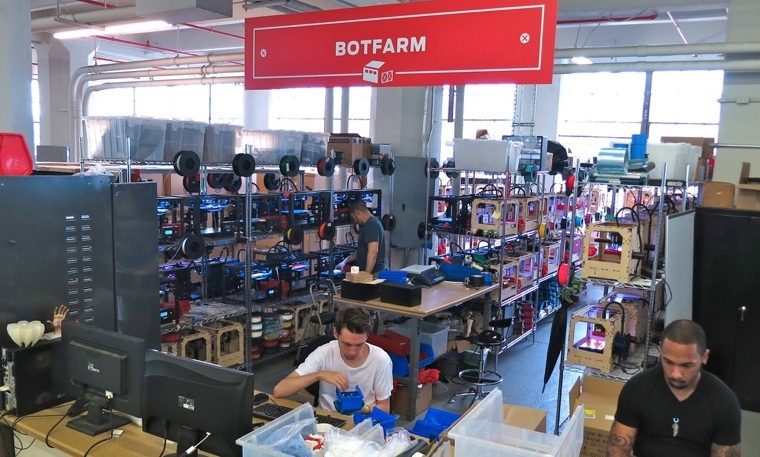Last Tuesday, President Obama sat down with a group of small business owners to discuss innovative ways to boost U.S. manufacturing. It was no coincidence that the meeting was held at a TechShop, an eight-year-old company with plans to open “makerspaces” across the U.S. Each location is filled with a wide variety to technology, digitally-enabled workshop equipment and a variety of emerging 3-D printing equipment for what is now being termed “additive manufacturing.” The collection of equipment provided by TechShop and similar makerspace businesses allow a fast-growing tribe of small business owners who are makers (tech-savvy Do-it-Yourselfers and creators of custom products), inventors, startup techies and a wide-variety of craftspeople the opportunity to prototype and fabricate products using the in-house equipment, all “for the price of a gym membership,” said the President. (And for less than that at some of the library-owned maker spaces popping up around the country.)
Video of the President’s remarks:
During the past four years, 3-D printing has fallen in price, igniting a new type of highly efficient manufacturing that could bring back to the U.S. various types of short-run, customized manufacturing. Where traditional manufacturing required time and a great deal of capital, 3-D printing allows smaller companies, with smaller budgets, to compete at a much higher and faster level.
Here are some examples:
Olloclip, a Huntington Beach, Calif.-based company that designs snap-on camera lenses for iPhones, is an example of a business that has emerged thanks to the 3-D printer. One of the few peripheral companies whose products are sold in Apple stores, olloclip has thrived by not only being able to quickly and cheaply prototype, but also create mock-ups of iPhone versions as soon as the specifications are announced. “We can literally sketch an idea in the morning, model it in the afternoon, pop it in the printer and have a sample made that evening” olloclip design director Chong Pak recently told Entrepreneur.com Manufacturing in-house also keeps olloclip’s computer-aided design files from having to be sent to prototyping service bureaus in China, where they have the potential to be copied and counterfeited.

MakerBot, the early leader in bringing low-cost 3-D printers to a mass market, also provides a service that is similar to the type of service you’d find at Kinkos or other “printing service bureau.” Except a bot farm prints out parts and finished products rather than ink on paper.
3-D printing has also transformed the business of ClearCorrect, a Houston-based maker of invisible braces. What once took 11,000 square feet and 10 to 15 people to manufacture, now only takes 4,000 square feet and three to four people.
Even on a larger scale, 3-D printing is making waves. Some see a future in which a cottage industry of custom car makers thrive using 3-D printing approaches. Don’t laugh: the idea is past the concept stage.
And 3-D printing / additive manufacturing is not limited just to plastics anymore. Using 3-D printing techniques, Arup, a Dutch engineering firm, recently created 1,000 custom-designed steel nodes for a complex lighting fixture using 3-D printing technology. What they produced was not only four times as strong but also 15% lighter. And they look pretty cool.

(Photo: Arub)
(Featured Photo: Whitehouse.gov)
